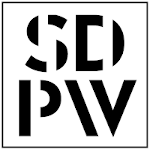Wykaz obszarów badawczych związanych z tagiem Synteza-organiczna:
| # | Obszar badawczy | Dziedzina naukowa |
|---|---|---|
| 1 |
Design and synthesis of organic compounds - receptors of the selected ions, ie. cations or anions of interest from the environmental protection-point of view. So for this purpose, the newly synthesized derivatives will bear analyte-binding structural motifs (amide group, azole moiety - 1,2,3-triazle, sumanene moiety). Additionally, the receptor molecule will include structural motifs responsible for aggregation-induced emission enhancement effect of these compounds. The prepared compounds will be characterized in terms of their photophysical properties by spectroscopic methods (absorption spectroscopy, emission spectroscopy, nuclear magnetic resonance).
Auxiliary supervisor: dr inż. Artur Kasprzak (KChO, WCh, PW)
|
|
| 2 |
Design and synthesis of novel organic compounds, potential anticancer agents with special regard to mutual prodrugs. A mutual prodrug is the association in a unique molecule of two, usually synergistic, drugs attached to
each other, one drug being the carrier for the other and vice versa. (C. G. Wermuth, C. R. Ganellin, P. Lindberg and L. A. Mitscher w Glossary of Terms Used in Medicinal Chemistry. IUPAC Recommendations 1998. https://doi.org/10.1515/iupac.70.0050). The synthesized prodrugs will be examined in terms of their biological activity. Next, they will be employed as the active agents of novel drug delivery systems based on organic macromolecules. Biological studies on the obtained prodrugs and drug delivery systems will be examined in cooperation with prestigious scientific teams.
|
|
| 3 |
1. Design and synthesis of protein kinase inhibitors (CK2 and PIM-1).
2. Study of the effect of protein kinase inhibitors on cancer cell survival.
3. Structure-activity relationship studies (SAR).
|
|
| 4 |
My scientific interests include the organic and supramolecular chemistry, mostly related to the design of novel chemical molecular receptors based on polyaromatic compounds. Research works merge the preparative organic chemistry with the studies on non-covalent interactions of the designed compounds with analytes. In particular, my research group specializes in the modification and applications of sumanene derivatives. Sumanene is the C3-symmetric C60-fullerene fragment. The unique feature of sumanene is its bowl shape, which causes the attractive properties of this molecule. My research group of one in Poland and one of few worldwide working in the area of applied chemistry of sumanene, especially in the field of design of molecular receptors. My scientific interests are also focused on the design of molecular receptors featuring the aggregation-induced emission enhancement effect. To synthesize such receptors, we synthesize novel polyaromatic compounds featuring this effect and we are studying their applications as receptors, mostly of ions (inorganic and bio-relevant ones).
|
|
| 5 |
My research focuses on the chemistry of photoactive organoboron compounds. The main objective is to understand how specific photoactive properties such as thermally activated delayed fluorescence (TADF), room temperature phosphorescence (RTP), aggregation-induced emission (AIE), triplet-triplet annihilation (TTA), and photosensitization abilities can be controlled by the structure of the material at both the molecular level and through non-covalent interactions in the solid state. To this end, I have undertaken extensive studies on a new group of organoboron compounds, starting from their design and synthesis to comprehensive physicochemical characterization using various experimental and computational tools. This research also includes the practical utility of the obtained systems as effective photosensitizers for anticancer and antimicrobial photodynamic therapies, water purification, organic catalysis, and the construction of optoelectronic devices such as OLEDs.
|
